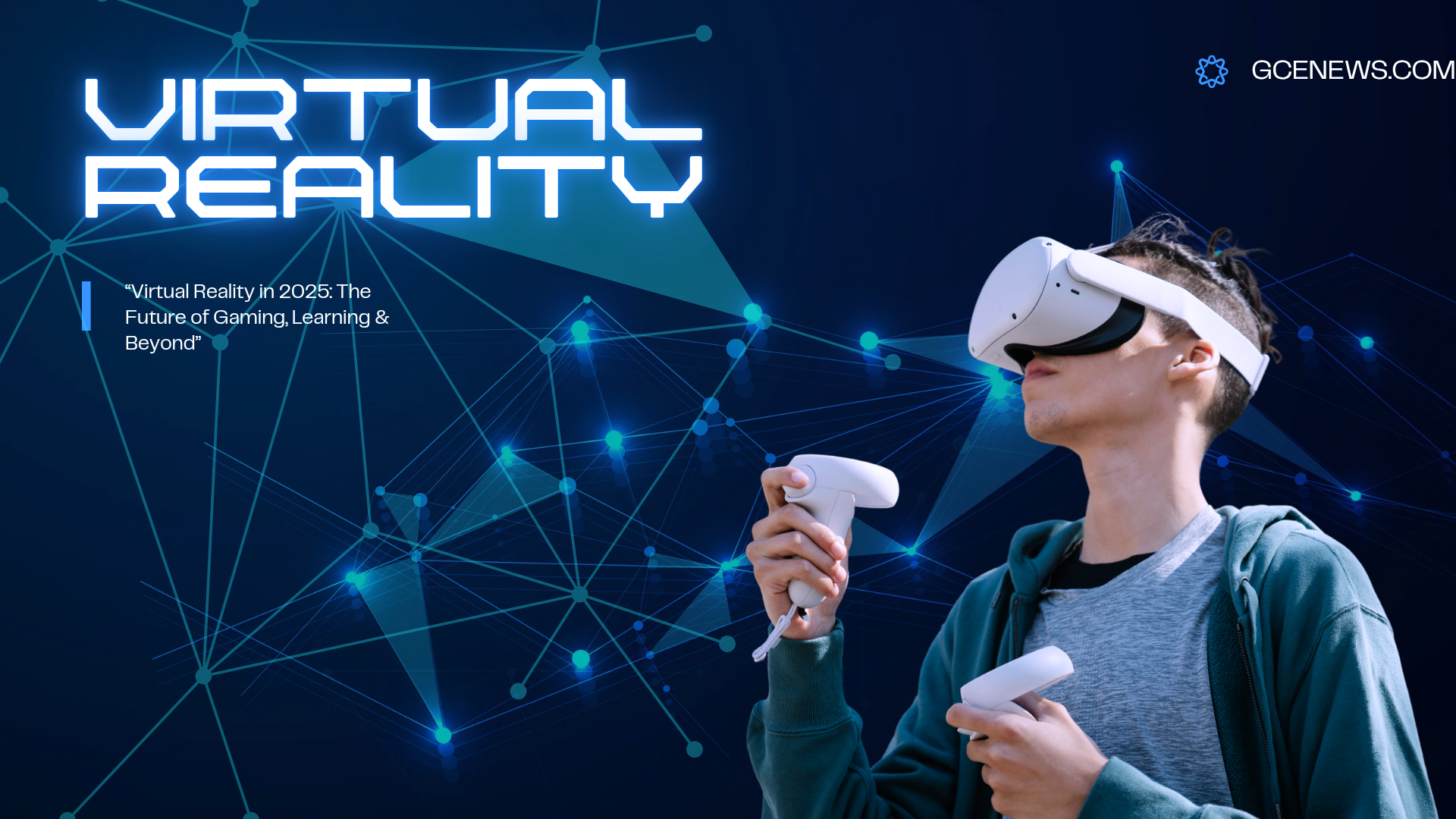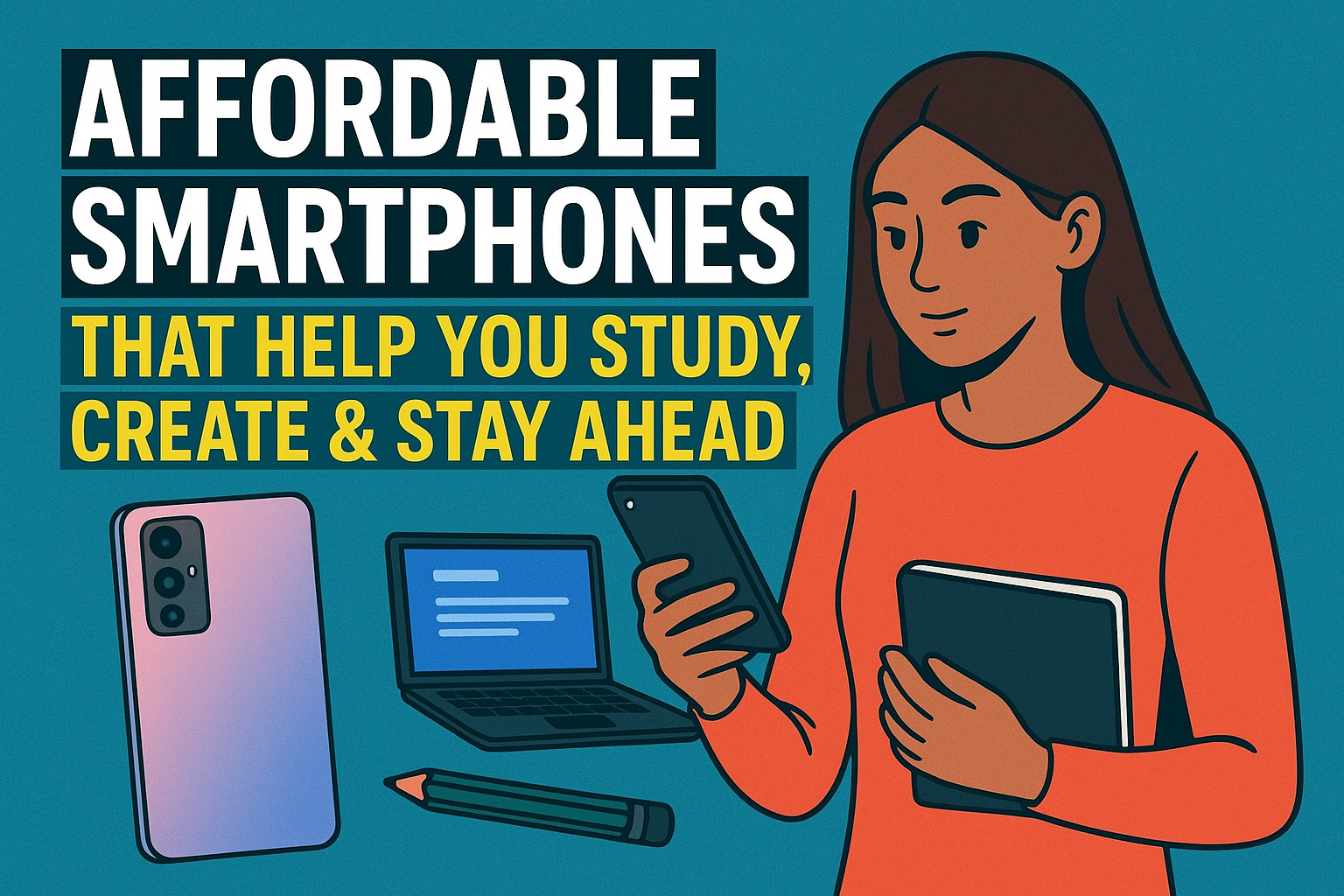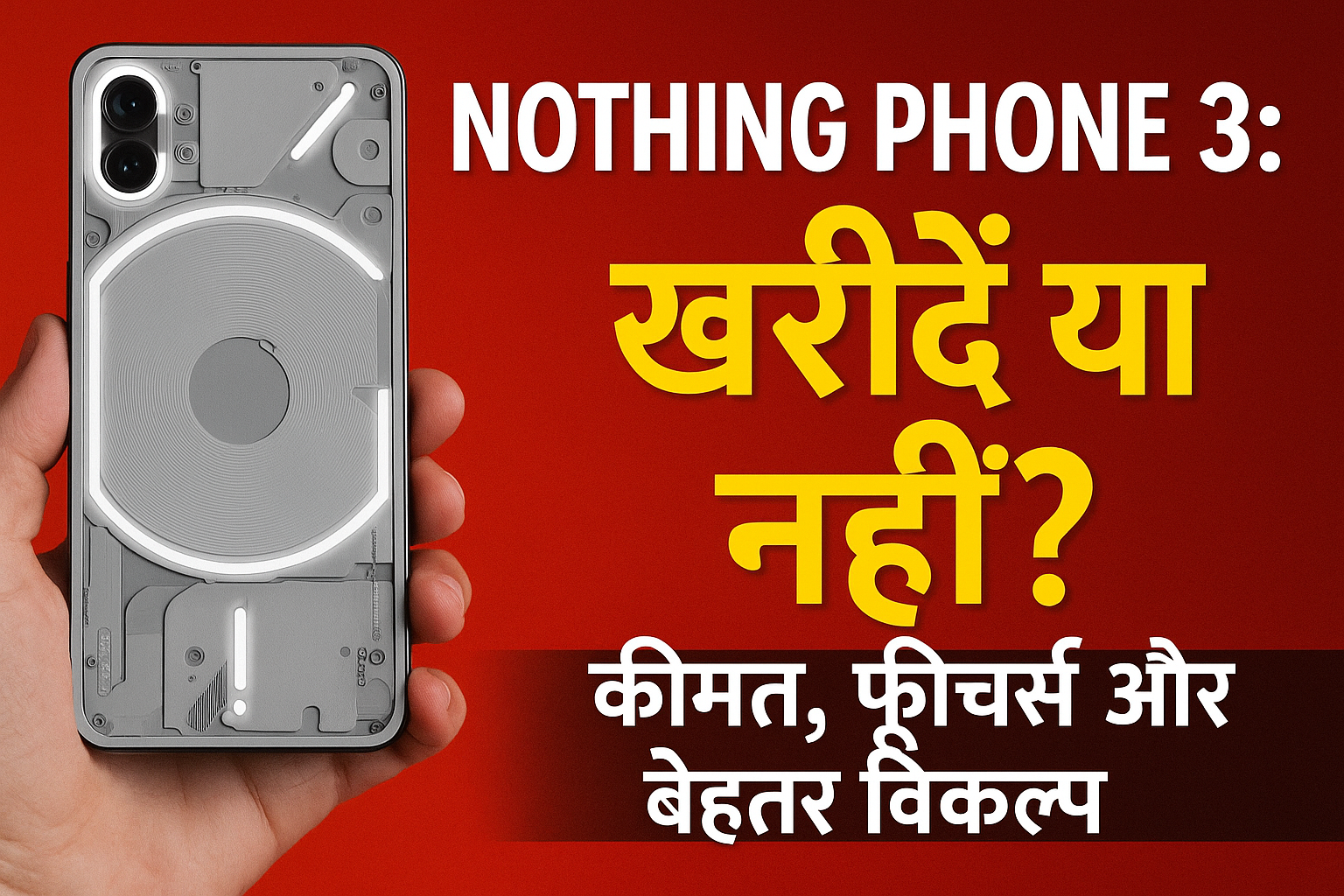Virtual Reality in 2025: A Complete Guide

Hi guys, I am your writer Sonam. I hope you’re doing good and staying healthy. Today we’re talking about something that still feels a little magical every time I try it — Virtual Reality (VR). If you’ve ever wished to step into a game, sit inside a movie scene, or attend a class where the solar system floats around you… that’s VR. And in 2025, it’s not just hype; it’s genuinely useful, more affordable, and way more creative than before.
● What Exactly Is VR (in simple words)?
Virtual Reality is a computer-generated world that you can see and hear (and sometimes “feel”) using a VR headset. You wear the headset like goggles, and suddenly your room disappears — replaced by a mountain top, a deep-sea dive, a virtual classroom, or a zombie-infested city (oops!). Good VR adds head tracking (wherever you look, the scene reacts), 3D audio, and hand controllers so you can interact. The result: your brain starts believing you’re there.
● Where VR Is Actually Used (beyond gaming):-
1) Education & Study:-
• Virtual classrooms & labs: Complex topics (like anatomy, physics experiments, or history) become easier when you can walk around the concept. In India, cities like Coimbatore are literally building AR-VR labs in corporation schools so students can learn by experiencing, not just reading. That’s not future talk; construction is underway right now.
•Exam prep & skill practice:
•Engineering students can do simulated labs; medical students can practice procedures with zero risk; language learners can role-play real-life conversations in safe settings.
2) Research & Professional Training:-
•Medical & surgical rehearsal:
• Simulations help doctors practice tough procedures.
•Aviation, defense, firefighting: Trainees train in high-risk scenarios safely.
•Manufacturing & maintenance: Workers can learn complex machine steps in VR before touching real equipment.
3) Gaming (the crowd-favorite):-
•VR gaming is still the biggest reason many people buy headsets. From rhythm games and boxing workouts to open-world adventures and horror, the immersion is next level. •PlayStation’s PS VR2 platform keeps getting new titles — plus it received a global price cut in 2025, making it a lot more reachable for console gamers.
4) Movies & Entertainment:-
Watching a horror scene in VR is… well, you feel it. You can sit in a virtual theatre, pick your environment, and watch films like you’re inside the scene. Apple even added a “Travel Mode” on Vision Pro for better in-flight viewing .
5) Creativity, Design & Music:-
Artists and creators are using VR to sculpt in 3D space, design rooms or products, and even compose music inside virtual studios. Imagine drawing in the air and walking around your sketch — it’s that kind of freedom.
6) Therapy, Wellness & Fitness:-
Guided meditation apps place you on a beach at sunrise; exposure therapy can help people slowly face phobias in a controlled environment; fitness apps turn workouts into games so they don’t feel like “work”.
7) Business & Remote Work:-
Virtual offices and meeting rooms are still evolving, but VR whiteboards, 3D prototypes, and training modules reduce travel and speed up collaboration — especially useful for globally spread teams.
● 2025 Trends You Should Know (short & spicy):-
•Smart glasses are exploding: Shipments jumped ~110% YoY in H1 2025, driven mostly by Ray-Ban Meta smart glasses (yep, those stylish ones). Translation: people want lighter eyewear for everyday use, not only chunky headsets.
•Meta’s next wave: Meta launched the Quest 3S at a budget-friendly price to bring more users into VR/MR. It’s basically “VR for most people” with mixed reality features.
•Android XR is coming: Google + Samsung + Qualcomm are building Android XR, the OS for headsets and glasses, with Samsung’s Project Moohan set to arrive in 2025. Expect better hand-tracking, easy navigation (thanks to Gemini), and cleaner app ecosystems.
•Console VR gets cheaper: PS VR2 slashed its global price to make entry easier for PS5 users.
•Premium stays premium: Apple Vision Pro still sits at the elite end, brilliant for productivity and media, but steep in price and limited availability in India (mostly via imports).
●Which VR Headsets Are Hot in 2025:-
• Prices move a bit by retailer and stock, but here’s the general idea:
• Meta Quest 3 / 3S (standalone, mixed reality):-
•Why people like it: No PC/console required, big content library, great hand-tracking.
•Approx price: Quest 3S starts at $299 (India landing price varies with import taxes); Quest 3 sits higher. Many Indian buyers import or buy via resellers.
•PlayStation VR2 :-
•Why people like it: High-quality VR gaming with console simplicity.
•Price trend: Global price cut to around $399.99; India tags vary but this helps overall affordability.
•Pico 4 (standalone):-
•Why people like it: Comfortable, decent visuals, often found via online importers.
•Indicative India pricing seen online: around ₹38–40k depending on seller/stock.
•Apple Vision Pro (premium “spatial computer”):-
•Why people like it: Superb displays, brilliant media/productivity, eye- and hand-tracking magic.
•Reality check: Price is $3,499 (imports make it much higher in India). Not a casual buy.
•Ultra-budget phone-based headsets (JioDive and similar):-
•Why people like it: ₹1–2k range, works with your smartphone for basic VR videos/games.
•Best for: First-time curiosity, kids’ edutainment, 360° videos — not for serious gaming.
- Can you use VR comfortably at home?
Absolutely. For standalone devices (Quest 3/3S, Pico 4), you just need some clear floor space and maybe a Bluetooth controller depending on the app. For PS VR2, you need a PS5. For PC-VR, you’ll need a gaming PC and a tethered headset (less common now for beginners). Keep a small, clutter-free play area, take breaks every 20–30 minutes, and you’re golden.
•AI + VR: Why Everyone’s Talking About This Combo
•Smarter virtual worlds: AI makes characters react more naturally, adjust difficulty on the fly, and even assist with your tasks (like a virtual tutor answering your doubt right there in the scene).
•Hands-free help: With Android XR and Gemini integration, headsets/glasses can understand what you’re seeing and help you take actions — think “what’s that building?” or “summarize this panel for me,” right in your view.
•Personalized learning: AI can track your progress in VR labs and nudge you with hints when you’re stuck — like a calm, invisible mentor.
● My First VR Experience :-
When I was little, I went to the mall with my dad. I noticed a man sitting on a chair, wearing a weird headset, slightly tensed. On a nearby screen, a horror movie was playing. I honestly didn’t get it and just walked away like, “Okay… weird.” Later, I returned with my father, still curious. He explained: “This is Virtual Reality.” The person wasn’t just watching the movie… he was inside it.
My dad asked the attendant if I could try. And boom — headset on, headphones on, heart racing. I still remember that feeling: the room around me vanished; I was in a different world. I looked around, and my brain said, “This is real.” It wasn’t, of course, but you know that thrill where you laugh and scream at the same time? That was me. For a few days, I was high on that experience — telling everyone how I “visited” a scary place without moving an inch.
That little moment is why I love VR. It bends reality just enough to unlock curiosity. And that’s also why I’m writing this blog — to share that wonder and show how it’s useful now, not just a toy.
•Practical Tips: If You’re Thinking to Buy a VR Headset
1. Pick by purpose:
•Games & fitness: PS VR2 (if you have a PS5) or Quest 3/3S (standalone library).
•Media & productivity (premium): Vision Pro, if budget and availability aren’t issues.
•Budget curiosity & 360° videos: JioDive or similar phone-VR (entry-level only).
2. Space & comfort:
•Clear a 2×2 meter area if possible. Start with seated experiences if you’re new. Keep a water bottle nearby (trust me!).
3. Motion sickness fix:
•Start with comfort-rated apps (slower movement). Gradually build tolerance. Take breaks. If an app has “teleport” movement, use that.
4. Health & hygiene:
Use a face cover, clean the headset foam, and avoid long sessions. If you wear glasses, check the headset’s glasses spacer/compatibility.
5. Expect updates:
Firmware updates often improve tracking and features. Install them; they genuinely make a difference.
● Recent India-Relevant Signals :-
Schools adopting AR/VR labs: Municipal schools setting up labs shows a serious education trend — not just private schools, but public ones too. That means the next generation will grow up * comfortable* with immersive tech.
•Smart glasses momentum: This is important because it hints at the next step: lighter, everyday wearables that blend AR + AI. Great for learning on the go, navigation, and quick info — without full VR immersion.
- Quick FAQ :-
Q1: Is VR only for gaming?
Nope. Education, training, therapy, design, fitness, and movies are legit use-cases now.
Q2: Can I use it at home safely?
Yes. Keep space clear, start slow, and take breaks. Kids should use it under supervision and for short sessions.
Q3: Which one should a beginner buy?
If you don’t have a PS5, Quest 3/3S is the easiest starting point. If you do have a PS5 and love console games, PS VR2 is great. On a minimal budget, try JioDive first to taste the concept.
Q4: Are there Hindi/Indian content options?
Yes. You’ll find Indian 360° travel videos, cultural content, and ed-apps. More local apps are coming as Android XR opens the ecosystem to familiar Android developers.
Final Thoughts:-
VR in 2025 is a sweet mix of fun + function. Schools are adopting it, companies are training with it, gamers are sweating with it (those boxing apps are no joke), and creators are designing the wildest ideas inside it. Hardware keeps improving — budget sets like Quest 3S invite more people in, PS VR2 got more affordable for console owners, Pico 4 stays a comfy standalone option via imports, and Vision Pro shows what the ultra-premium future can look like. Meanwhile, smart glasses are exploding, hinting that tomorrow’s “everyday” device may sit right on your face, not in your pocket.
If you’ve never tried VR, give it one honest shot. Maybe your first scene won’t be a horror movie like mine (probably for the best!), but there’s a good chance you’ll come out smiling, a little shocked, and a lot curious. And once that curiosity bites, learning and creating in VR stops feeling like tech — it just becomes your next normal.




